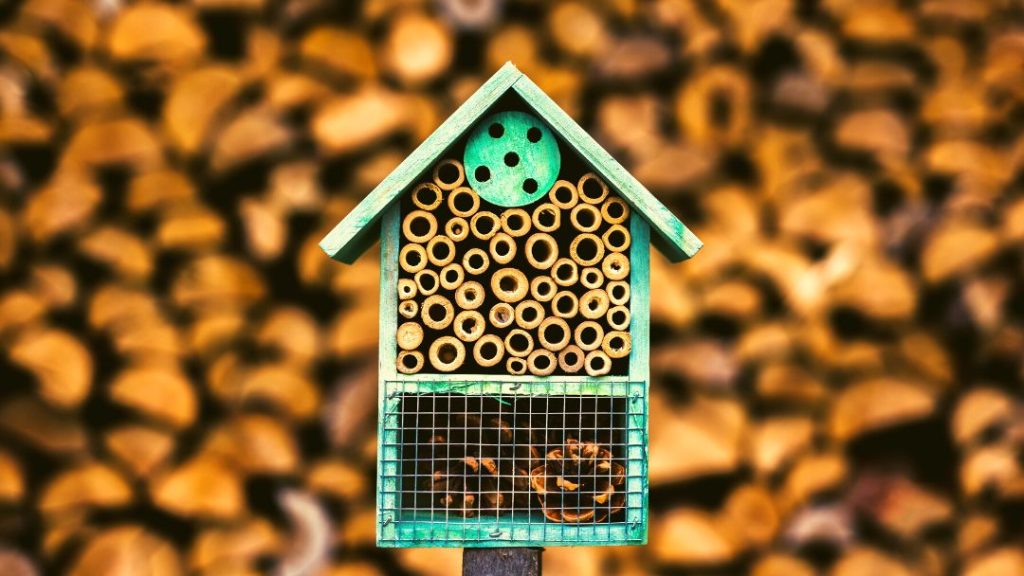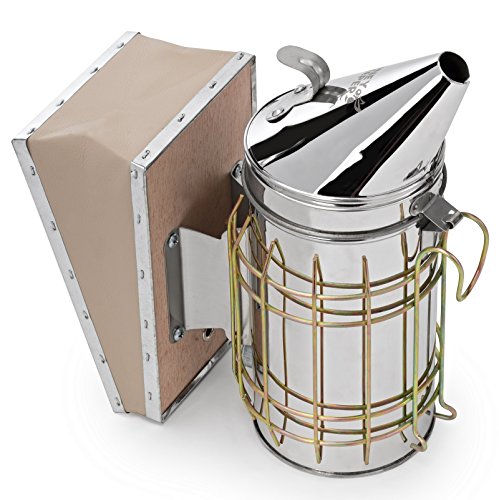When To Put Mason Bee House Out?
There is no hard and fast rule regarding when to put mason bee house out. In fact, experts don’t mention any exact date of the year to release mason bees. Removing mason bees at the right is essential whether you are using last year’s cocoons or buying them online.
Putting mason bees’ house out means placing them in the nest at the correct time and in ideal condition. This helps the cocoons to emerge and become fully formed adult mason bees within four weeks. This post gives you a complete idea of the perfect time to release mason bees.
When To Put Mason Bee House Out?
Nature will tell you the exact time to take out mason bees from their house.
It is a good rule of thumb to set mason bees free when the temperature level is consistently between 10°C to 13°C or 50°-55°F. Most plants bloom during this temperature level.
As soon as early spring flowers are opening, these bees are likely to emerge.
Mason bees are more attracted to nearby plants. It is a good rule of thumb to set up the mason bee house a few hundred feet from nearby blooming plants.
They are less likely to fly further than three hundred yards from their house.
Crocuses, hyacinths, Daffodil, Primrose, Siberian Squill, Snowdrops, etc., are some early blooming spring plants.
What Happens If You Put Mason Bee House Out Too Early?
If you release them too early, Mason Bees will likely face two issues.
Attacks from Predators
Releasing the mason bee too early from the house will keep it outside for too long.
Some animals, birds, or insects are more likely to notice it. They may attack, harm, kill, or eat Solitary bees.
Beekeepers can add wire mesh to the front of the holes to protect the bees and their nests from predators and pests. It will work as a barrier to keep them safe.
Plus, hanging the mason bee house in a safe location is essential. You can hang it on a wall of your house or a shed. Make sure it is protected from high winds.
Premature Emergence And Frost
Mason bees are susceptible to temperature changes. They are more likely to emerge if the temperature is consistently 13°C /55°F.
However, not all species of Solitary bees react in the same manner. For instance, the Japanese Orchard Mason Bee emerges when the air temperature warms up to about 55⁰F.
Red Mason Bees emerge at 15°C in mid-summer. The emergence of the European Orchard Mason bee starts when the temperature reaches 50-55 degrees.
They emerge in late spring or summer, depending on the weather and temperature. European Orchard Mason bees prefer a 50%-70% humidity level for emergence.
Solitary bees take around 3-5 days to emerge as fully formed adults. Emerged bees may die from excessive heatwaves followed by a frost.

Common Signs To Release Mason Bees from House
Budding Branches
Budding branches are the most common indication of blossoms. The underdeveloped flowers or leaves will bloom soon.
Putting the mason bees’ house out before the blooming session occurs is necessary. The ideal blooming time may vary until favorable condition appears.
There will be a vast number of blossoms to allow bees access the nectar & pollen and facilitate pollination.
Consistently between 50°-55°F
Flowers or leaves are likely to bloom when the temperature level is consistently between 50°-55°F.
This specific weather level triggers the reproductive development of a plant and helps it to bloom.
You can utilize thermometers or environmental sensors to track the temperature.
Alternatively, contact local weather stations or government agencies to get weather updates.
Also, you can use your smartphone weather app to track the temperature level.
Minimum Chances Of Frost
Frost kills young flower buds as they freeze. It causes blasted or damaged blooms.
Plus, mason bees can’t fly in cold temperatures. Wind-driven cold can even kill them.
It is best to release mass bees when there is a minimum chance of frost.
Track the local weather conditions to find the best time to put bees out of the house.
How to Release Mason Bees from Their House?
Releasing mason bees requires putting all the cocoons inside the bee nest. You don’t need to put them inside the tubes. After all, these solitary bees can naturally emerge from drilled holes or cavities.
But a small box or container comes in handy to protect bees from wind, sunlight, rain, and predators (birds and squirrels).
Have you decided to release all mason bees at a time? It is best to free half of these solitary bee cocoons during favorable environmental conditions.
Then, wait for two weeks before releasing the remaining half. These mason bees may take around 3 weeks to emerge.
Males will emerge first, followed by the females. Male bees will look for mature virgin queen bees to mate.
How to Keep Mason Bees Safe?
- Set up your mason bee house at least 6-7 feet off the ground. Keeping it under the edges of the house, garage, or shed roof is a good rule of thumb.
- Make sure the bee house faces south or southeast to receive the maximum early morning sunlight during the winter. It will help bees start foraging earlier in the day and make them warm.
- Place a sloping and overhanging roof on the bee house to provide additional protection from rain and offer shade. It can also deter birds and other predators from reaching the bee nests.
- Plant early flowering plants for your solitary bees. The distance between the mason bee house and the flower garden should not be more than 300 feet.
What Items You Need For Mason Bees?
Are you planning to release mason bees? Make sure you have all the necessary items for your mason bees. The following are the crucial things you need for mason bees.
Mason Bee House
A typical mason bee house has some containers to provide shelter to bees. Mason bee houses are mainly made of solid wood.
It is a natural, insulating material that provides a stable environment and mimics the bees’ natural habitat.
Besides, the wood must be waterproof and weather-resistant to protect bees from rain, moisture, and extreme weather.
Make sure the Mason bee house you choose offers easy accessibility to collect the cocoons and clean the holes appropriately.
Nesting Tubes
Mason bees lay eggs on nesting tubes. These tubes prevent parasite cycles from occurring easily.
Also, getting rid of wasps, flies, and mites is easygoing. You can effortlessly clean the house each spring.
Nesting tubes are available in two types: natural reeds and cardboard. Natural reeds are made of lake beds and swamps. They are visually attractive, strong, and weather-resistant.
Cardboard tubes are made of compressed paper cardboard. Busy solitary bees can quickly enter and exit the house. This 100% recyclable paper doesn’t trap any moisture.
The width of these nesting tubes should be 8-10 mm. Too small a diameter will affect the size of the bees. Also, the tubes should be at least 6-7 inches long.
It is also necessary to arrange for around 30-35 tubes to create the ideal mason bee nesting conditions.
Mason Bee Cocoons
Of course, you will need some mason bee cocoons as they contain the next generation of bees and provide a safe environment for developing bees.
You can either use last year’s cocoons or buy them from an online/offline store. But how many mason bee cocoons you will need?
It is a good rule of thumb to start with a minimum of 20 cocoons. The number of nesting tubes determines how many cocoons you need.
Experts recommend using 1.5 mason bee cocoons for every nesting tube. Make sure to use healthy cocoons that are water-repellent and float in fresh water.
Clayey Mud
Mason bees need mud to build the walls of their housing chambers. It helps them to seal off the egg inside their own chamber.
They usually prefer thick, damp mud with a high clay content. The mud creates a strong protective barrier as it becomes dry and protects bees from predators.
The mud source should be close to the mason bee house. You can excavate a section of soil and moisten it with liquid. A half-pound of soil is enough to pass the entire season.
If there is no soil, you can buy a package of Mason bee mud mix and place it near the nest. Make sure it is free of contaminants, such as agrochemicals, salt, oil residues, road runoff, etc.
Final Words
Are you still wondering when to put mason house out? The simple answer is setting them free as soon as the plants start to bloom. Sometimes, your guess time may not exactly match with the natural time.
It is best to release 40% to 50% of cocoons first, followed by others. Make sure to place the mason bee house against a flat surface close to early blooming plants. Track your mason bees’ movements and take immediate action to protect them from predators.




